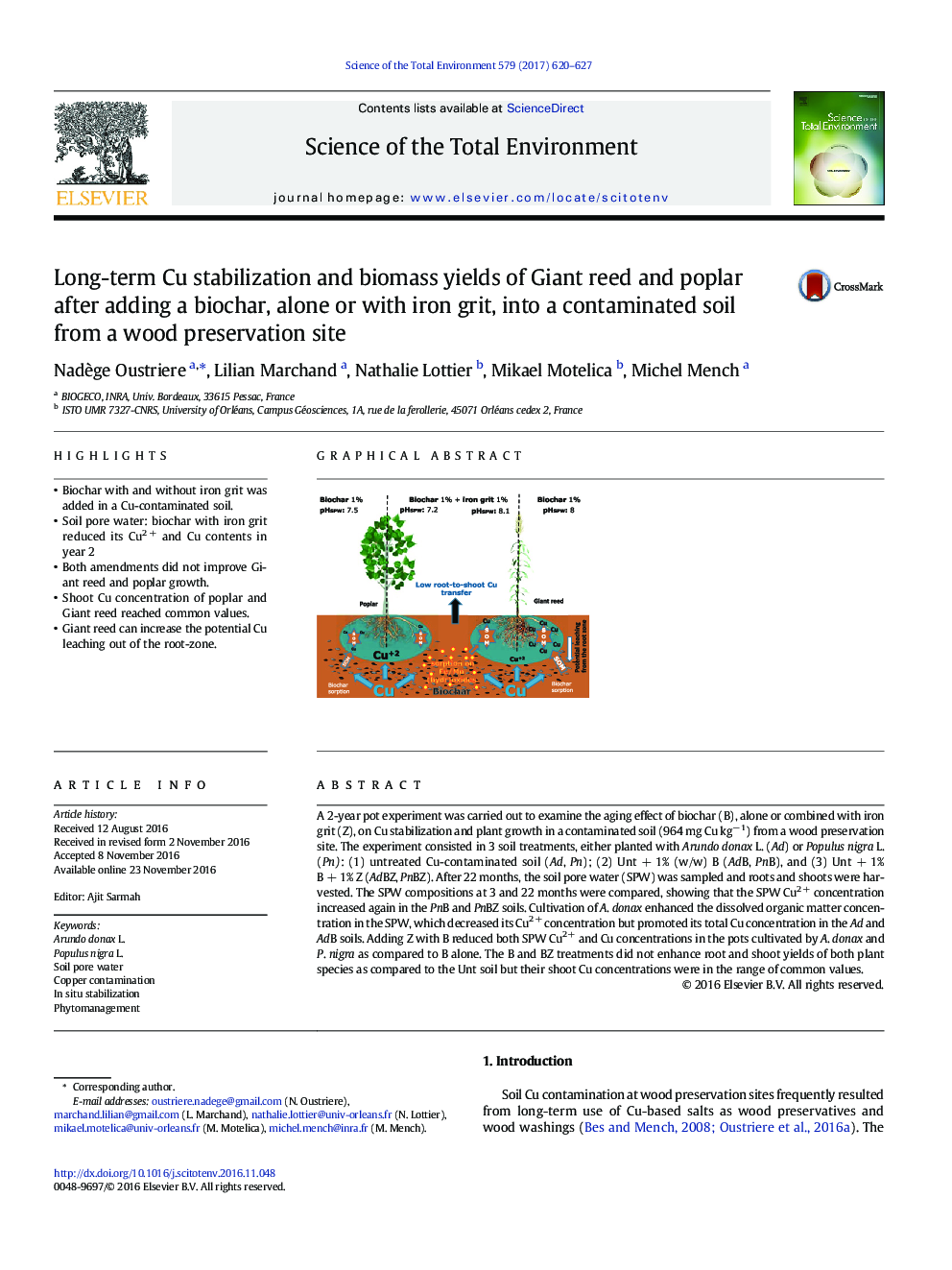| Article ID | Journal | Published Year | Pages | File Type |
|---|---|---|---|---|
| 5751415 | Science of The Total Environment | 2017 | 8 Pages |
â¢Biochar with and without iron grit was added in a Cu-contaminated soil.â¢Soil pore water: biochar with iron grit reduced its Cu2 + and Cu contents in year 2â¢Both amendments did not improve Giant reed and poplar growth.â¢Shoot Cu concentration of poplar and Giant reed reached common values.â¢Giant reed can increase the potential Cu leaching out of the root-zone.
A 2-year pot experiment was carried out to examine the aging effect of biochar (B), alone or combined with iron grit (Z), on Cu stabilization and plant growth in a contaminated soil (964 mg Cu kgâ 1) from a wood preservation site. The experiment consisted in 3 soil treatments, either planted with Arundo donax L. (Ad) or Populus nigra L. (Pn): (1) untreated Cu-contaminated soil (Ad, Pn); (2) Unt + 1% (w/w) B (AdB, PnB), and (3) Unt + 1% B + 1% Z (AdBZ, PnBZ). After 22 months, the soil pore water (SPW) was sampled and roots and shoots were harvested. The SPW compositions at 3 and 22 months were compared, showing that the SPW Cu2 + concentration increased again in the PnB and PnBZ soils. Cultivation of A. donax enhanced the dissolved organic matter concentration in the SPW, which decreased its Cu2 + concentration but promoted its total Cu concentration in the Ad and AdB soils. Adding Z with B reduced both SPW Cu2 + and Cu concentrations in the pots cultivated by A. donax and P. nigra as compared to B alone. The B and BZ treatments did not enhance root and shoot yields of both plant species as compared to the Unt soil but their shoot Cu concentrations were in the range of common values.
Graphical abstractDownload high-res image (242KB)Download full-size image
